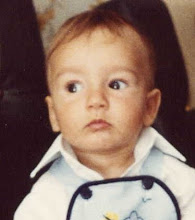 Rumours had it that part of the next 007's Quantum of Solace movie was going to be filmed right here in Paranal. All conversations during the past month would end up on Bond and Olga Kurylenko, la chica Bond. They were also going to shoot in Antofagasta and the most controversial issue was that, in the plot, these places are supposed to be Bolivia, and chileans and bolivians have an historical background of not getting along very well...
Rumours had it that part of the next 007's Quantum of Solace movie was going to be filmed right here in Paranal. All conversations during the past month would end up on Bond and Olga Kurylenko, la chica Bond. They were also going to shoot in Antofagasta and the most controversial issue was that, in the plot, these places are supposed to be Bolivia, and chileans and bolivians have an historical background of not getting along very well...We started seeing some movement around here, but mainly basic staff people coming and going, taking notes for the preparations. On Tuesday, however, a boom of people invaded this place, with tons of equipment, cars, trucks, making everyone really excited. In the afternoon we were given a lecture by the observatory director about what was planned for the upcoming days and all the restrictions that we would be subjected to. Details on the scenes shot are confidential and pictures were forbidden, which caused quite a fuss with the usual arrogance of the staff people.
 All was done with great secrecy. A stuntwoman came first to perform and test one scene. It was tough, she fell a couple of times. After that, another actress came (rumours about her being Charlie Chaplin's granddaughter and the second bond girl were heard as well, but I cannot confirm that) for another scene. The main actors only came for two days and their arrival time was unknown. I stayed up until late one night to see if they would arrive, but got no luck... Today, however, they were there, early morning. I barely saw them and didn't even recognize Craig, someone had to tell me that he was there.
All was done with great secrecy. A stuntwoman came first to perform and test one scene. It was tough, she fell a couple of times. After that, another actress came (rumours about her being Charlie Chaplin's granddaughter and the second bond girl were heard as well, but I cannot confirm that) for another scene. The main actors only came for two days and their arrival time was unknown. I stayed up until late one night to see if they would arrive, but got no luck... Today, however, they were there, early morning. I barely saw them and didn't even recognize Craig, someone had to tell me that he was there. The truth is that Paranal almost stopped to see the shootings. Someone (nobody knew who) would regularly play the Bond tune in the communication radios for just a couple of seconds. Today, with all the actors, everyone stayed to watch a bit more. It is also the day I would come down to Santiago, my turno had ended. I got to see a bit of all, but it was disappointing that I barely saw the actors... well, almost disappointing. With some audaciousness, my reward came in the end!
The truth is that Paranal almost stopped to see the shootings. Someone (nobody knew who) would regularly play the Bond tune in the communication radios for just a couple of seconds. Today, with all the actors, everyone stayed to watch a bit more. It is also the day I would come down to Santiago, my turno had ended. I got to see a bit of all, but it was disappointing that I barely saw the actors... well, almost disappointing. With some audaciousness, my reward came in the end!(After failing so many times to stealthily get a picture of the bond girl, Olga, I was despairing watching the shootings, sitting quietly, one hour before leaving. At some point I see her and another girl walking towards the residence. She was not in the scene they were shooting and everyone was outside, so I gave them a few minutes and followed them inside. She was sitting in the lounge talking with another guy, no security around, not much staff movement as well. I took a deep breath, convinced myself that I had nothing to lose, heart beating completely out of control, shaking all over with the excitement coming from antecipation and approached them. I asked in a surprisingly polite english if I could ask for a picture. The two of them staring at me, those big surprised gorgeous green eyes staring at my abandoned puppy face, until she babbled a "oo..o..ok". I asked the guy to take the picture (and therefore to avoid any chance of having him also in the picture), held her shoulder and got myself THE picture. I know what you are thinking now, but I will NOT post that picture here, it is mine, my own, my precious!!)
More info in
http://www.eso.org/public/outreach/press-rel/pr-2008/pr-07-08.html




























